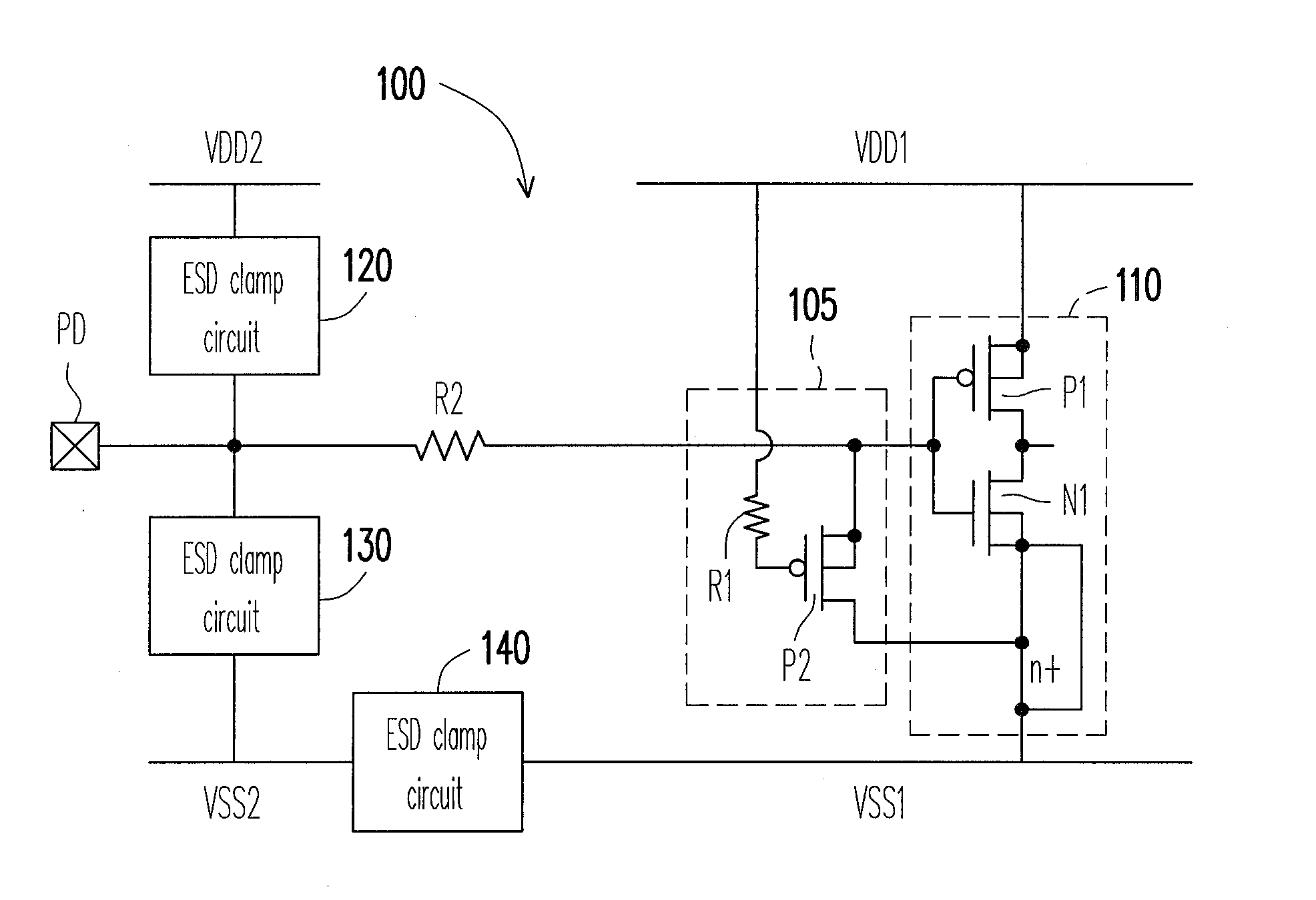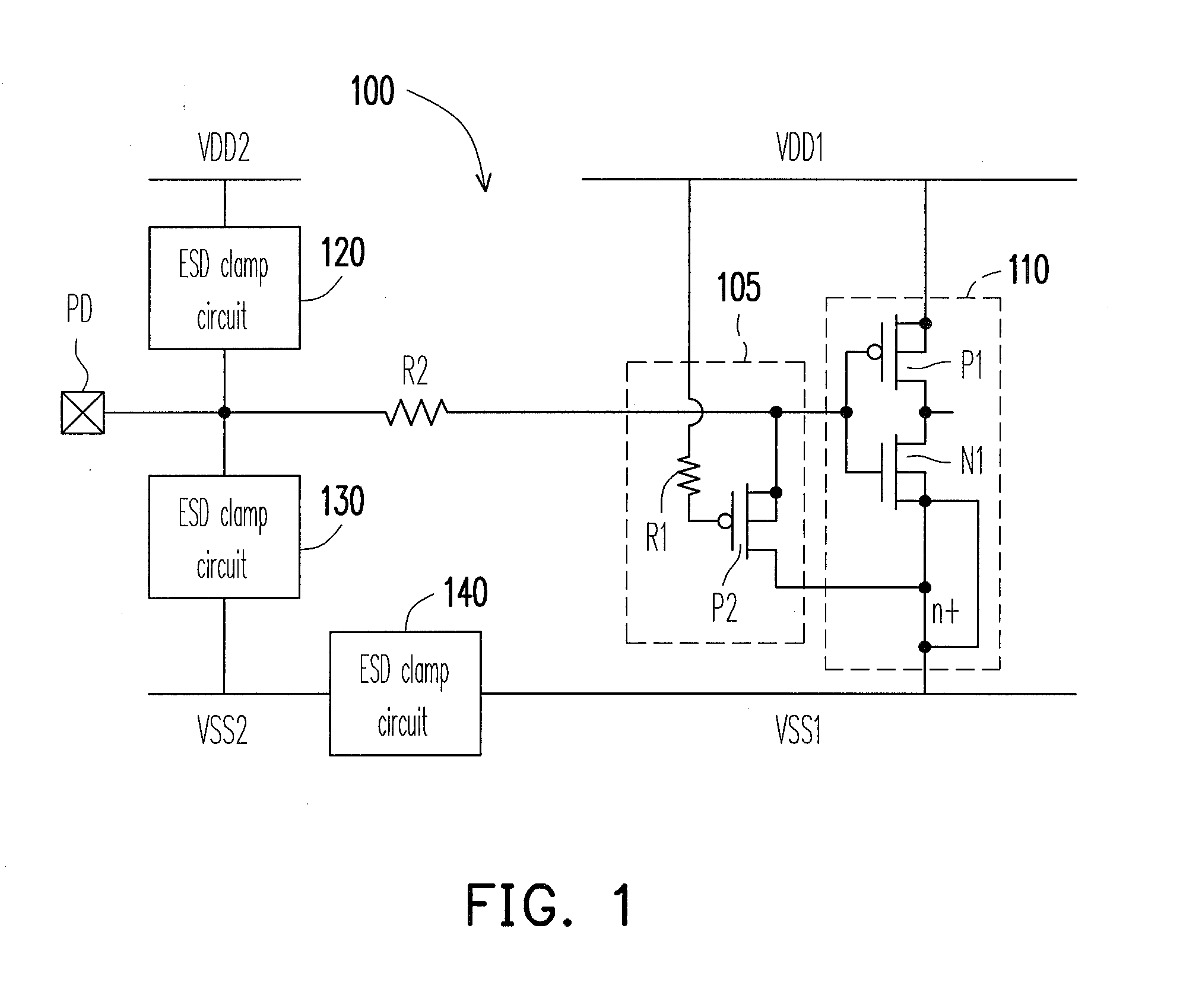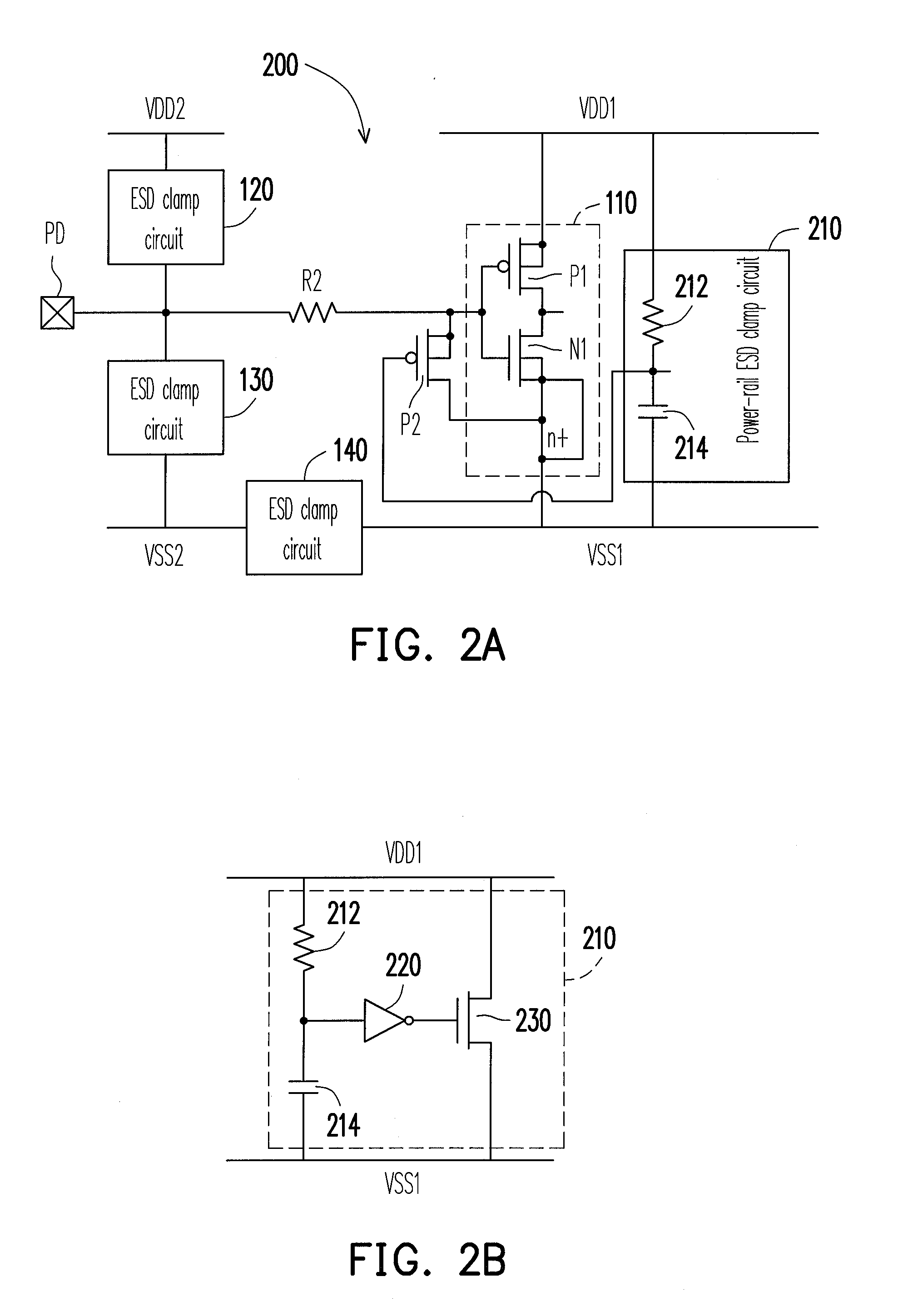Electrostatic discharge protection circuit
a protection circuit and electrostatic discharge technology, applied in semiconductor devices, semiconductor/solid-state device details, transistors, etc., can solve the problems of damage to the internal circuit, damage to the integrated circuit, etc., and achieve the effect of efficient cdm esd protection performan
- Summary
- Abstract
- Description
- Claims
- Application Information
AI Technical Summary
Benefits of technology
Problems solved by technology
Method used
Image
Examples
first embodiment
[0031]FIG. 1 shows a circuit diagram capable of ESD protection in accordance with a first embodiment of the application. Referring to FIG. 1, a circuit 100 includes an input stage circuit 110, a PMOS transistor P2, two resistors R1 and R2, and ESD clamp circuits 120, 130 and 140, wherein the input stage circuit 110 further includes a first PMOS transistor P1 and a first NMOS transistor N1. The first PMOS transistor P1 has a source and a body both coupled to a first power rail VDD1, and a drain coupled to a drain of the first NMOS transistor N1. The first NMOS transistor N1 has a source and a body both coupled to a first ground rail VSS1, and a gate coupled to a gate of the first PMOS transistor P1. The resistor R2 is coupled between the gate of the first PMOS transistor P1 and an input pad PD. It is noted that the resistor R2 is not necessary in the circuit 100, the input stage circuit 110 can directly connect to the input pad PD without the resistor R2.
[0032]The ESD clamp circuit 1...
second embodiment
[0034]The resistor R1 of FIG. 1 can be replaced with a resistor of a power-rail ESD clamp circuit. FIG. 2A shows a circuit diagram capable of ESD protection in accordance with a second embodiment of the application. Referring to FIG. 2A and FIG. 1, the difference between a circuit 200 and the circuit 100 is mainly a power-rail ESD clamp circuit 210, as shown in FIG. 2A. The power-rail ESD clamp circuit 210 is coupled between the first power rail VDD1 and the first ground rail VSS1, and capable of providing ESD protection for the first power rail VDD1 and the first ground rail VSS1. The power-rail ESD clamp circuit 210 includes a resistor 212 and a capacitor 214, in which the resistor 212 and a capacitor 214 are connected in series between the first power rail VDD1 and the first ground rail VSS1. The gate of the PMOS transistor P2 is coupled to a common node of the resistor 212 and the capacitor 214, and therefore coupled to the first power rail VDD1 through the resistor 212.
[0035]Th...
third embodiment
[0036]According to another embodiment of the present application, the ESD protection designs can be implemented by an additional PMOS circuit in conjunction with a source loading (for example, resistor, diode, or MOS), as shown in FIGS. 3-6. Referring to FIG. 3, FIG. 3 shows a circuit 300 capable of ESD protection in accordance with the third embodiment of the application. The difference between the circuit 300 and circuit 100 as shown in FIG. 1 is mainly a diode 310, the diode 310 has a anode coupled to the source of the first NMOS transistor N1, and a cathode coupled to the first ground rail VSS1. Similarly, the diode 310 can also be added to the circuit 200 as shown in FIG. 2A. Referring to FIG. 4, FIG. 4 shows another circuit 400 capable of ESD protection in accordance with the third embodiment of the application. The circuit 400 includes the diode 310 and the power-rail clamp circuit 210, wherein the diode 310 is coupled between the first NMOS N1 and the first ground rail VSS1....
PUM
 Login to View More
Login to View More Abstract
Description
Claims
Application Information
 Login to View More
Login to View More - R&D
- Intellectual Property
- Life Sciences
- Materials
- Tech Scout
- Unparalleled Data Quality
- Higher Quality Content
- 60% Fewer Hallucinations
Browse by: Latest US Patents, China's latest patents, Technical Efficacy Thesaurus, Application Domain, Technology Topic, Popular Technical Reports.
© 2025 PatSnap. All rights reserved.Legal|Privacy policy|Modern Slavery Act Transparency Statement|Sitemap|About US| Contact US: help@patsnap.com



